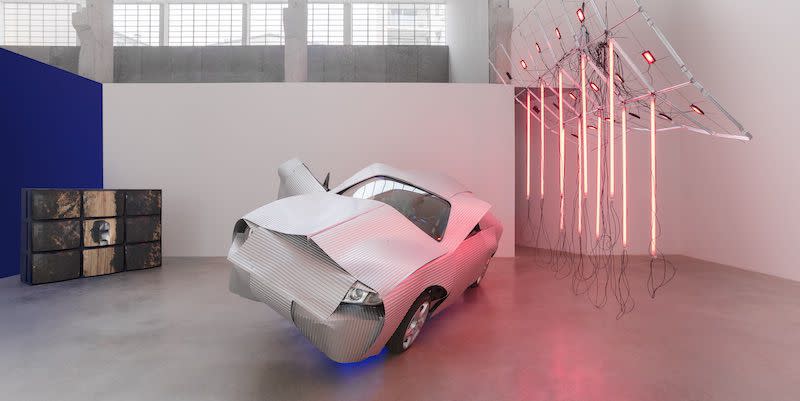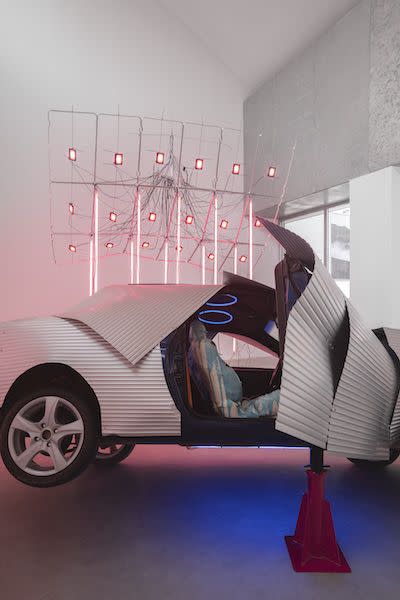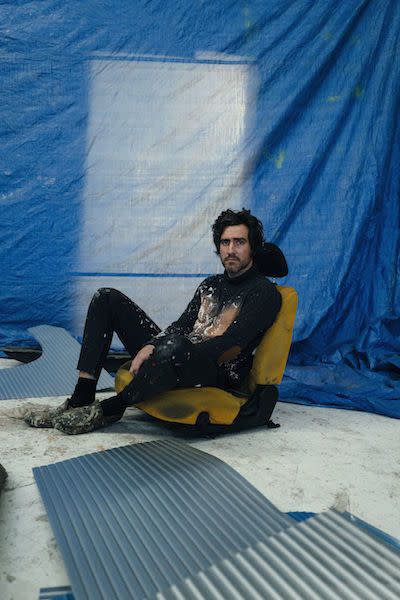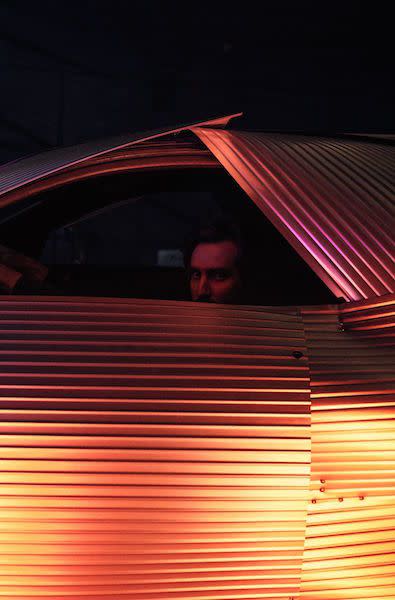Rimowa Kicks Off Milan Design Week with a Stunning Aluminum Car Sculpture

In 1950, the European luxury suitcase company Rimowa, beloved by designers and celebrities, alike, added its now signature grooves to the aluminum shell of its cases, inspired in part by the silhouettes of airplanes. It is only fitting, then, that for his collaboration with Rimowa, timed to Milan Design Week, Spanish designer Guillermo Santoma used this same ridged aluminum in a sculpture based on another emblem of modern travel: the car. The installation entitled “Gas,” which is on display at the Spazio Maiocchi through April 14th and is presented in conjunction with the creative studio Kaleidoscope, features a fully-functioning car customized with Rimowa aluminum, a nod to Ed Ruscha artist’s book Twentysix Gasoline Stations. It is accompanied by a photographic ‘zine and short film by Thibaut Grevet. Here, Santoma discusses the thinking behind his work.

How and why did American artist Ed Ruscha, and specifically his iconic series, “Twentysix Gasoline Stations,” become an inspiration for your collaboration with Rimowa?
I was thinking about Ed Ruscha’s early photographic works, which focused on the relationship between the city of Los Angeles and the car seen from an urban, architectural point of view. This series is a vision of what you see from the car window in a city where it is no longer viable to walk-the motels and gas stations that punctuate the urban landscape are almost domesticated. Ed Ruscha appropriates the symbol of the car to address the meaning of things. In a similar way, in my work, I’m always interested in that ability to tell a story through metaphors.

Did you know immediately that you wanted your installation to center on cars? Why was that an important expression of Rimowa?
The car is a technological object but it’s also highly nostalgic, and that makes it a pop icon. I’d wanted to work on a car for a long time, or at least work on the idea of car. We all know that it would involve an industry to produce a car, so wanting to make one is almost a contradiction in itself. The idea behind this project was really shaped by the material qualities of the Rimowa aluminum plates, plus the fact that the exhibition site, Spazio Maiocchi, was previously a garage. Then of course there are some interesting metaphoric connections between a suitcase and a car, but it is important to me that the spectator draws them.
How did Rimowa’s aluminum material inspire you and what was it like working with it?
I had never worked with aluminum before, but when seeing the sheets, it immediately came to me how we could use it. When dismantling the preexisting car to reconstruct it, the main challenge was to provide a structure to the material, which is otherwise very flexible, and create tension points in order to make it rigid. In the end, it is not so different from the idea behind the suitcases, where the maximum strength is provided by rounded corners. I am interested in the idea of pushing the material to the limit.

Where will the car you’ve designed live once the exhibition is over?
The life of the car has already been. It has lived a life before I even bought it. It has lived during the construction-the idea of the process as performance is very important to each project of mine. And after working on it, we went to the Monegros desert [in northeastern Spain] to drive it. I’m not interested in sculptures as dead objects-I believe in objects that exist in flux. After the exhibition, the car will live on-but we still don’t know exactly where it will go next.
('You Might Also Like',)

